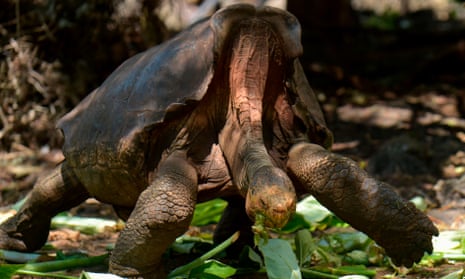The Galápagos National Park has announced it is ending a captive breeding program for giant Española tortoises, after one tortoise produced more than 800 offspring, helping save the species.
When the breeding program began, just 15 representatives of the species Chelonoidis hoodensis remained in the wild on the island of Española. Twelve were female and three were male.
Extinction seemed imminent. But included in the captive breeding program was Diego, an enterprising male on loan from the San Diego Zoo.
His inclusion turned out to be pivotal. The breeding program produced 2,000 tortoises, 40% of which were thanks to Diego, who is now more than 100 years old.
“We developed mathematical models with different possible scenarios for the next 100 years and in all the conclusion was that the island has sufficient conditions to keep the tortoise population that will continue to grow normally, even without any new repatriation of juveniles,” said Washington Tapia, director of the Giant Tortoise Restoration Initiative (GTRI).
Officials said the success of the program was also thanks to the eradication of non-native species and the cultivation of cactus on which the tortoises rely.
Once, 15 species of giant tortoise called the Galápagos Islands home. Two of those species are now considered extinct.
According to the GTRI, in the mid-1800s the tortoises served as food for buccaneers and whalers and were also hunted for oil.
